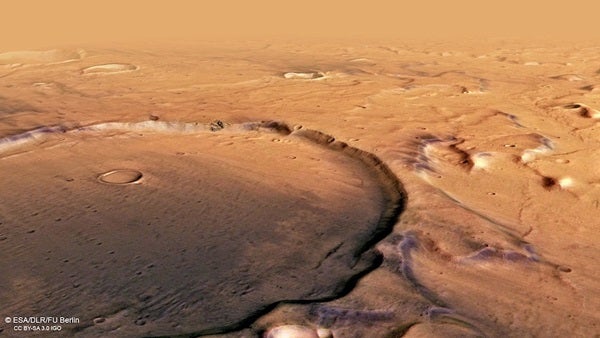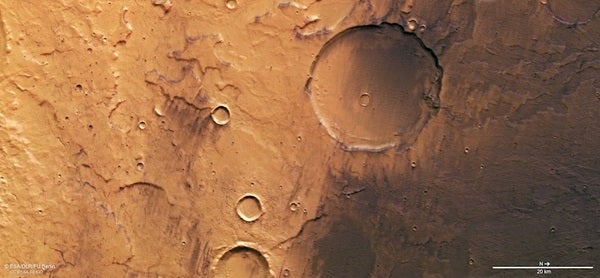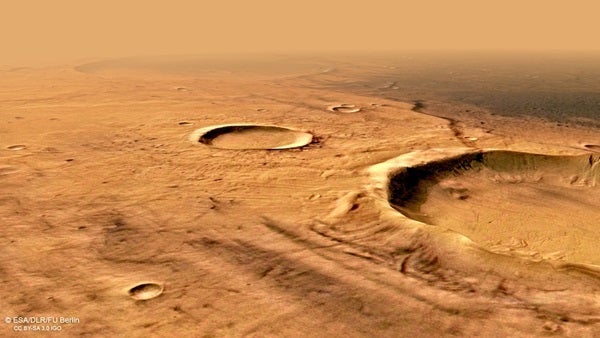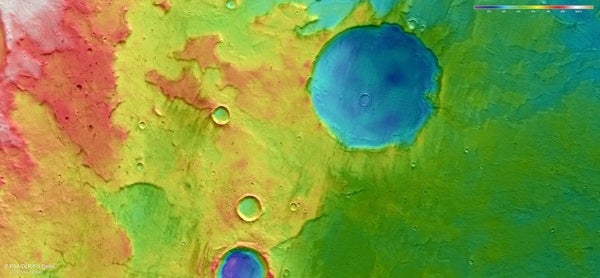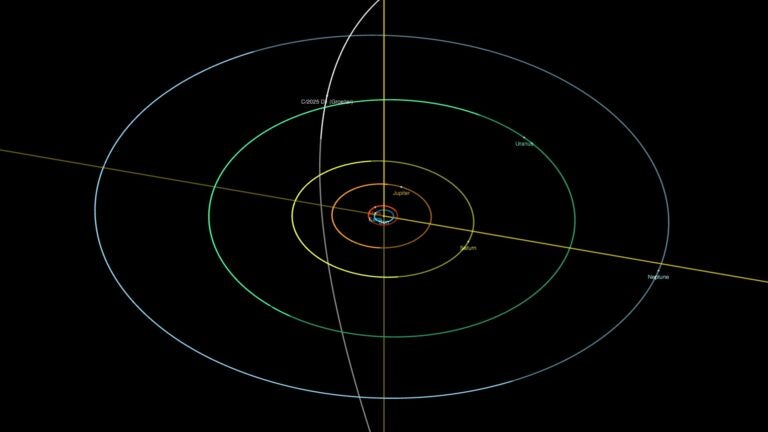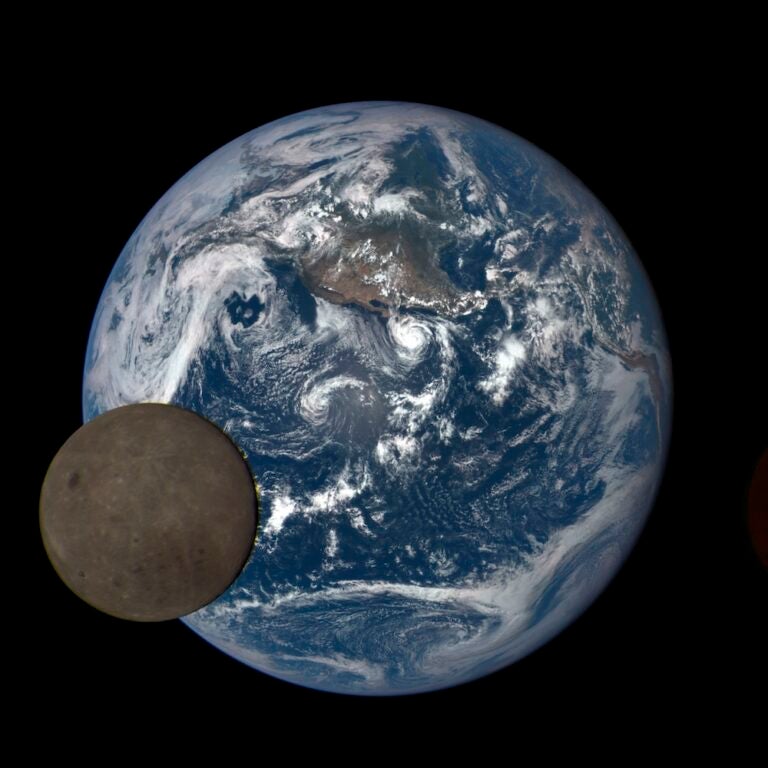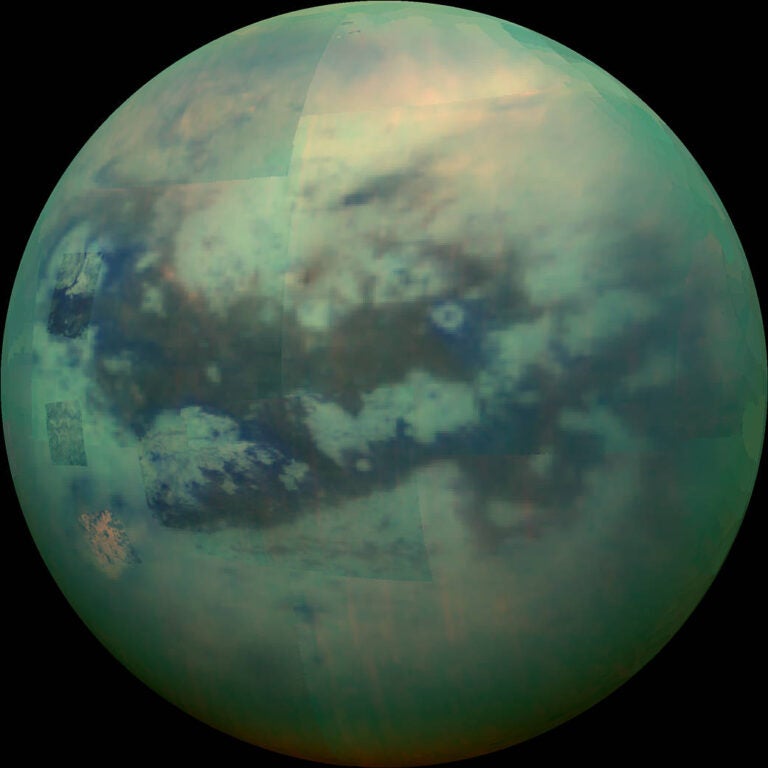“These images are a snapshot of the complex geological history of Mars,” Solmaz Adeli, a postdoctoral researcher at the Institute of Planetary Research at the German Aerospace Center who is part of the Mars Express team told Astronomy. She points to traces of wind erosion, evidence of running water, and signs of buried ice and glaciers, just to name a few.
Terra Cimmeria is a particularly interesting region, Adeli says. This is largely because of Eridania, a paleolake that existed during the early part of Mars’ past, when liquid water was abundant in the southern highlands. Though the water is now gone, valleys and shorelines remain, as well as plenty of sediment rich in various clay minerals.
Adeli is particularly stricken by the small impact crater within the largest crater, which points to ice and glaciers buried beneath the surface. “These craters are filled with a mixture of ice and dust, covered by a layer of debris and dust protecting these deposits from quick sublimation,” she says. This means that, while ice would rapidly turn to gas under current atmospheric conditions, surface material preserved below should continue to exist underground.
A story of martian wind
The images also tell the story of Mars’ blustery past, says Alice Baldridge, associate professor and director in the Department of Environmental and Earth Sciences at Saint Mary’s College. “Windswept, dark volcanic surfaces to the north and bright, dusty, wind-streaked plains to the south” reveal materials that have shifted and weathered as gusty conditions shaped their formation, she told Astronomy.
Lori Fenton, a senior research scientist at the SETI Institute who studies how winds shape planetary surfaces, notes that the images show wind streaks and dust devil tracks aligned in the same direction. “That suggests, but doesn’t prove, that they may have been formed at the same time, or at least that the strong, sand-moving winds seem to blow mainly from the northwest,” she told Astronomy.
Fenton adds that darkness on the northwest-facing sides of the mesas and on the northwest-facing interior wall of the large crater indicates dark sand carried by wind. This, combined with the lack of a dune field on the crater floor, suggests the winds are strong, continuous, or both, she says.
Studies of the Martian surface will continue to march forward thanks to missions such as NASA’s InSight lander, which is already taking daily measurements of temperature and wind pressure, and the ESA’s planned ExoMars rover, which aims to launch next year carrying a suite of instruments designed to scour Mars’ surface for signs of life — both past and present.

